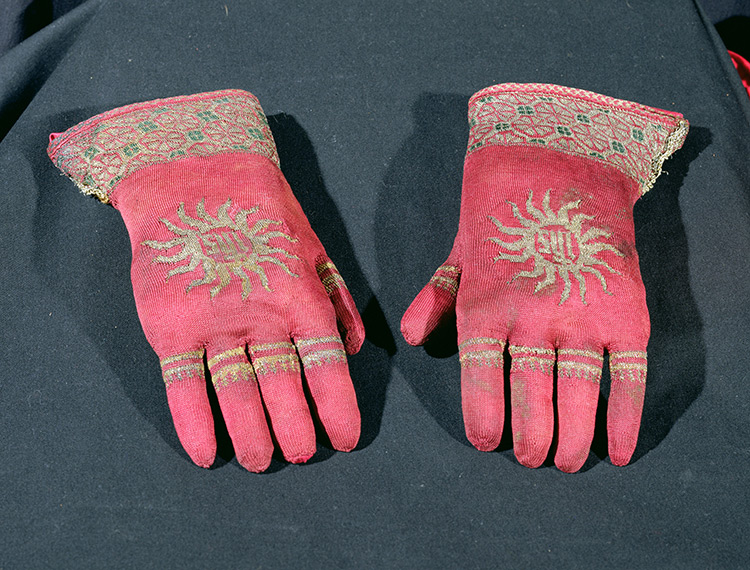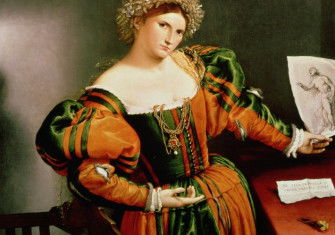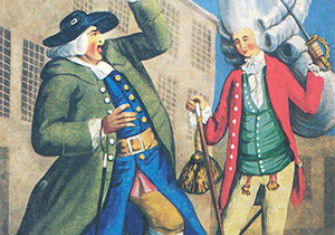Northern Glam
The beginnings of fashion are often traced to the courts and cities of medieval southern Europe. Should we be looking further north?
 Kali sailed from Norway to Grimsby, as you did in the 12th century; the Orkneyinga Saga says so. There he met men from Scotland, the Hebrides and Orkney and, back in Norway, went round the inns to show off the fashions he had adopted on his travels: ‘He was stylishly dressed now that he was just back from England’, the saga says.
Kali sailed from Norway to Grimsby, as you did in the 12th century; the Orkneyinga Saga says so. There he met men from Scotland, the Hebrides and Orkney and, back in Norway, went round the inns to show off the fashions he had adopted on his travels: ‘He was stylishly dressed now that he was just back from England’, the saga says.
His colleague Jon ‘was a great one for clothes’, too. The pair indulged in blood feuds and their status depended on brawling and killing, but they were something you might not expect: they were dandies.
Since they came from the raw new port of Bergen, far from the fashions of the courts of southern Europe, and because they lived more than two centuries before most textbooks say that the idea of fashion began, their story is worth exploring.
Kali lived in a town where ‘new fashions in dress made their appearance’ in the 12th century, according to the Saga of Olaf the Gentle. It was not just that men were choosing to wear tight breeches, ankle rings, ribboned gowns and high shoes with gold laces, not practical dress on ships or docks; a man could also be condemned for dressing out of date. The drab politician Erling ‘wore old-fashioned clothing’, the saga says, disapprovingly, and even worse: ‘He had the king wear similar clothes when he was young.’ Luckily the king, ‘when he became independent’, chose to dress finely.
The sagas get the point of fashion: choice, change, a bit of social pressure and impractical style. They may also suggest something else: how and why fashion started.
The archaeological evidence from Bergen, from the 11th century onwards, includes shoes for women, children, men, a startling number of which are embroidered in silk. Silk was produced in the Tuscan city of Lucca from the 12th century and Parisian clerics were already denouncing ‘worm’s excrement’; silk on shoes was later a mark of rank in illuminated manuscripts and in the south it was a luxury. But in the north it was democratic; it seems everyone could have fashion.
Silk was a product of a world in motion, of the trading routes that ran from Bergen, through the Baltic, down the great Russian rivers as far as Constantinople. Such trade allowed fantasies to flourish.
Choice mattered even in the frigid colonies of Greenland, as the clothes laid out in cemeteries suggest. Settlers tailored clothes because they could not waste material: they were farmers with collars, with clothes that flared out from the shoulders. They liked materials such as the reddish diamond twill from England and rough weave from Ireland. Buttonholes came to Greenland while they were still a scandal further south. They had so little and there was hardly anybody to see them but they still made choices.
This was alarming. Clothes symbolised your status, even your income, and such meanings were meant to last. The sumptuary laws of the England of Henry VIII states that ‘no man under the degree of a Baron [may] use in his Aparell of his body or of his horses any clothe of gold of tyssue’ and better cloth of gold was reserved for even higher ranks. You were what you wore.
It was shocking that people could choose how to dress. Faker, a character in the 13th-century Roman de la Rose, claims he is so good at changing clothes that he can be ‘now a knight, now a monk, a bishop, a chaplain, now a clerk, now a priest ... a master or the owner of a proper castle or just a man who works in the forests’. Long robes once meant you were literate, a lawyer perhaps – only nobles let their buttocks show in the street – but by 1467 Jacques de Clerc could complain that ‘there wasn’t a journeyman, however minor, who didn’t have a long robe down to the ankle’.
The issue was not excess or finery; it was class. In Scotland, brightly coloured clothes for working people were illegal after 1430. In England, nobody with less than £100 a year could wear fur. The law tried to ban clothing that suggested social fluidity.
Jeanne of Navarre, 13th-century queen of France, was furious at the silks and jewels she saw in the Flemish trading towns of Bruges and Ghent: ‘I thought I was the only queen’, she snapped. She saw such splendour in towns where Venetian galleys called, where spices came west and north, in towns that traded overseas.
Fashion seemed to come from somewhere else. Robert I of Naples blamed the French for the ‘bumfreezer’ styles of the 1330s, even though he was himself French. The first printed books of fashion, of the 16th century, are about what people wear in other countries – the enormous trousers of Scotland, the straw hats of Antwerp.
Moralists worried about what these changes in clothing meant. Fashion was more than just the business of beautiful women or sumptuous courts. It begins with those, like Kali, who had seen things done differently.
Michael Pye is the author of The Edge of the World: How the North Sea Made Us What We Are (Viking, 2014).






